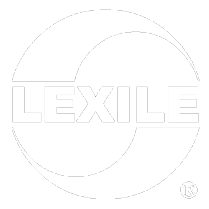
6 tips for teaching business English to low level learners
The CEFR describes A1 and A2 learners as ‘basic users’ of a language. So how can we help these students to develop their English for the workplace?
Here are our six top tips:
1. Focus on high-frequency vocabulary for work
Learning English vocabulary for work context is the top priority for many low-level learners in business English classes. It helps them to communicate their message in a simple, effective way. This makes it important to teach common words and set expressions for everyday work situations.
These include:
- lexical sets (words related to the same topic or situation) – for example, days, months, numbers, verbs to describe work routines, verbs in the past.
- common collocations with verbs and nouns (for example, manage a team, have meetings, place an order, solve a problem).
- functional language and fixed phrases – greetings (How are you? Nice to meet you.) and offers (How can I help you? Would you like…?).
2. Help students with vocabulary learning
Teach vocabulary items in realistic contexts. For example, phone calls, to-do lists, short emails, text messages etc.
While it might be tempting to give students lots of vocabulary to memorize, this can cause overload, be frustrating and ultimately demotivating for learners. Instead, you should aim to present eight to ten new words in a lesson as a general rule. This is an achievable number for working memory and helps to build learners’ confidence. The number of words can be a little higher if items are easy to show in images or there is repetition; for instance, the numbers 20 to 100.
Have students make simple decisions about new words, as this helps with recall later. Start with simple tasks, such as matching words and pictures or verb and noun collocations they’ve seen in a short text (for example, managing a team, call customers, writing emails, etc.). Next, ask students to complete sentences using the target words and write their own sentences using these words.
Getting students to personalize new vocabulary makes it more memorable, for instance writing sentences describing their work routines. Repetition also aids long-term memory, so make sure vocabulary is recycled in the materials in later lessons.
Finally, make a list of vocabulary games to use for revision exercises, warmers and to finish classes.
3. Maximize student speaking time
Learners need to develop their English-speaking skills for work. The classroom is a safe, low-stakes environment for them to gain fluency and confidence.
Use the audio and video scripts of short dialogues or an extract from a longer script. Students read the dialogue aloud in pairs or groups. Give feedback by drilling the stress and rhythm of any words or phrases which were difficult with the whole class. Back-chaining phrases – starting with the last sound and building up going backwards – is an excellent way to drill. Get students to swap roles and repeat the task.
You can also use another technique called disappearing dialogue. Put a short dialogue on the board for students to practice in pairs. Then delete parts of the dialogue and ask them to repeat the task, swapping roles each time. Gradually delete more parts to increase the challenge. Students can reconstruct the dialogue as a final task.
Moreover, surveys, questionnaires, true/false games, and information-gap exercises are ways to practice speaking in English, target structures, and vocabulary.
4. Provide support for speaking tasks
Use a model dialogue from the coursebook or one you wrote yourself. Ask students to build their own short dialogues by changing some details (such as names, dates, prices, and quantities). Or use one half of the dialogue and ask students to write the other part.
Then, have them perform their dialogues together with their script. Then, ask them to try to memorize it without the script. Finally, they should perform the dialogue for another pair or even for the whole class.
Give students a reason to listen to their partners when they are speaking. For example, a speaking task like placing an order on the phone, gives them a reason. The listening student can note the essential information and check their answers afterwards.
Repeating tasks with slight variations increases the challenge, improves fluency, helps students remember useful phrases, and builds self-confidence.
5. Practice work skills your students need
Students are much more engaged and motivated when the class content is relevant to their everyday situations. They will want to learn English for work and skills they need to practice include telephoning, socializing and giving presentations.
Writing skills are also important. This includes formal and informal text messages, simple forms, less formal emails to colleagues (e.g. to update on work) and more formal emails to customers (e.g. replying to a simple inquiry).
At the start of the class, make it clear what students will be doing in the lesson. You can refer to the lesson outcome on the coursebook page or write the lesson outcome in your own words on the whiteboard. For instance, “Today you will learn to place a simple order on the phone”.
At the end of the class, ask students to respond to the self-assessment statement: “I can place a simple order on the phone.”
This is a reminder of the purpose of the lesson. It also helps the students and teachers to reflect on the progress they are making.
The grammar syllabus should also relate to English learners' communicative needs (for example, describing your company, instructions, and talking about arrangements).
6. Teach functional language phrases
Draw students’ attention to useful phrases and functional language in speaking and writing. For instance, when greeting visitors (“Nice to meet you.” “See you later.”). They can memorize these utterances and put them to immediate use outside the classroom.
Use role plays to practice work skills and functional language skills. Give learners ample time to prepare and write down what they want to say. In a phone call role play, put students back to back to increase the challenge and add an element of authenticity; even better if they can call each other on their mobile phones from separate rooms.
Similarly, with presentations (for example, introducing yourself and your company), give students time to prepare and rehearse. They can ask colleagues to video them on their mobile phones for later correction work and feedback. Or they could rehearse and film themselves at home and show the final video in the next class.
These are just a few tips and techniques for teaching corporate English to low-level learners. It’s especially important for these students to start simple, recycle language often and build their confidence in their workplace English.











